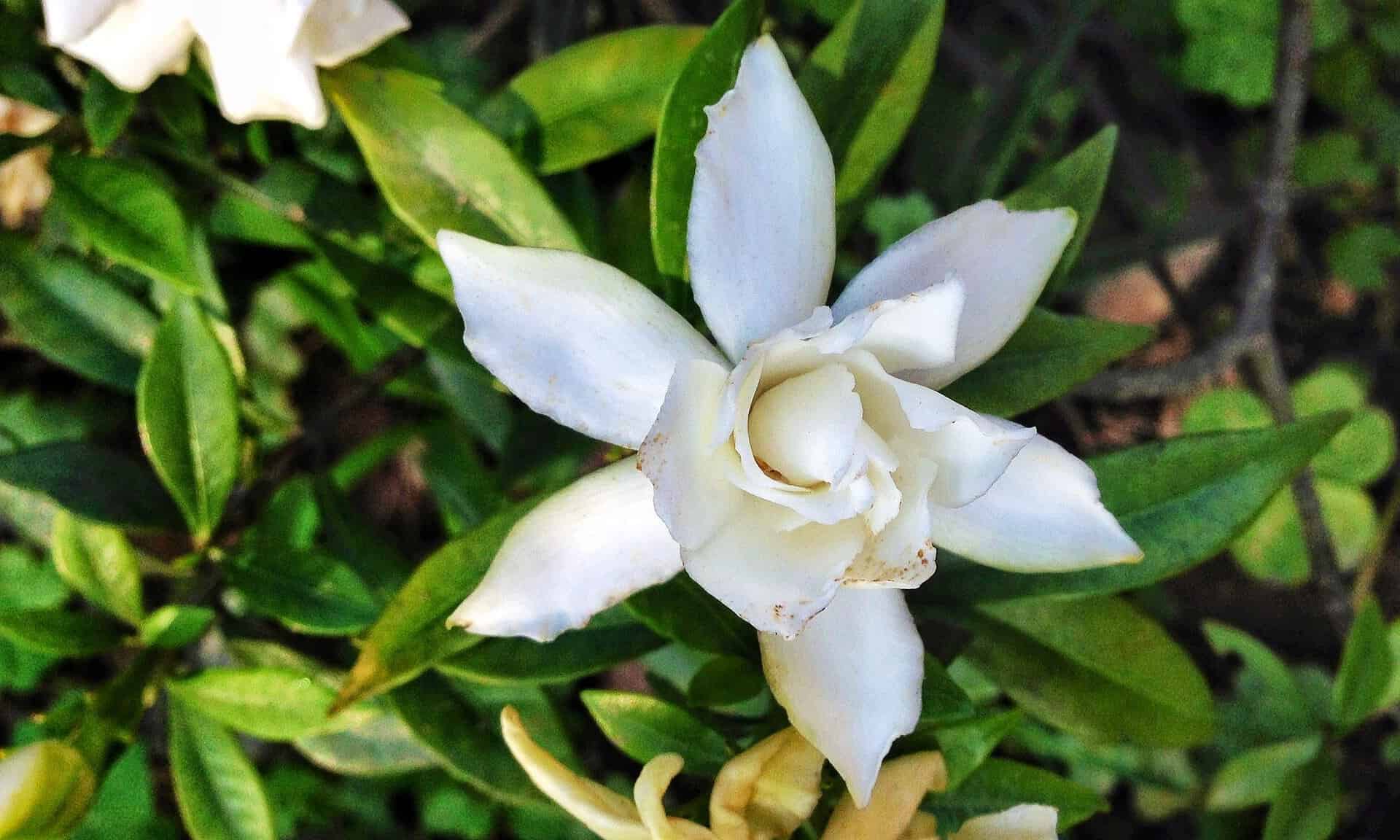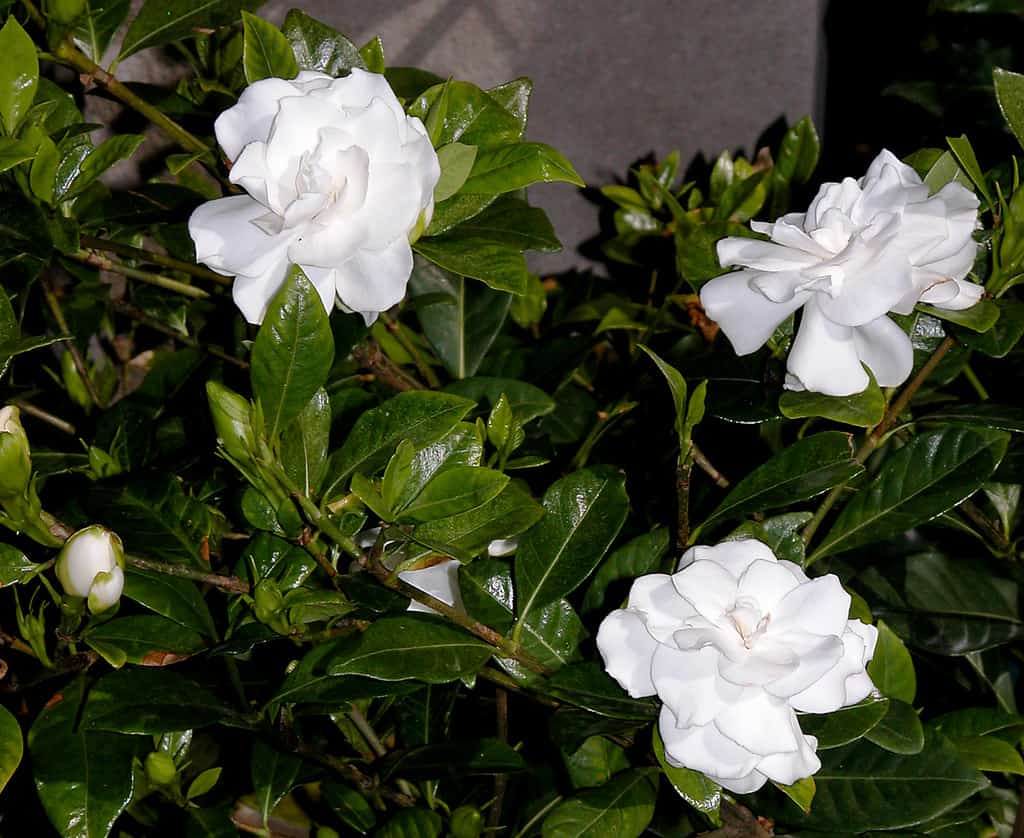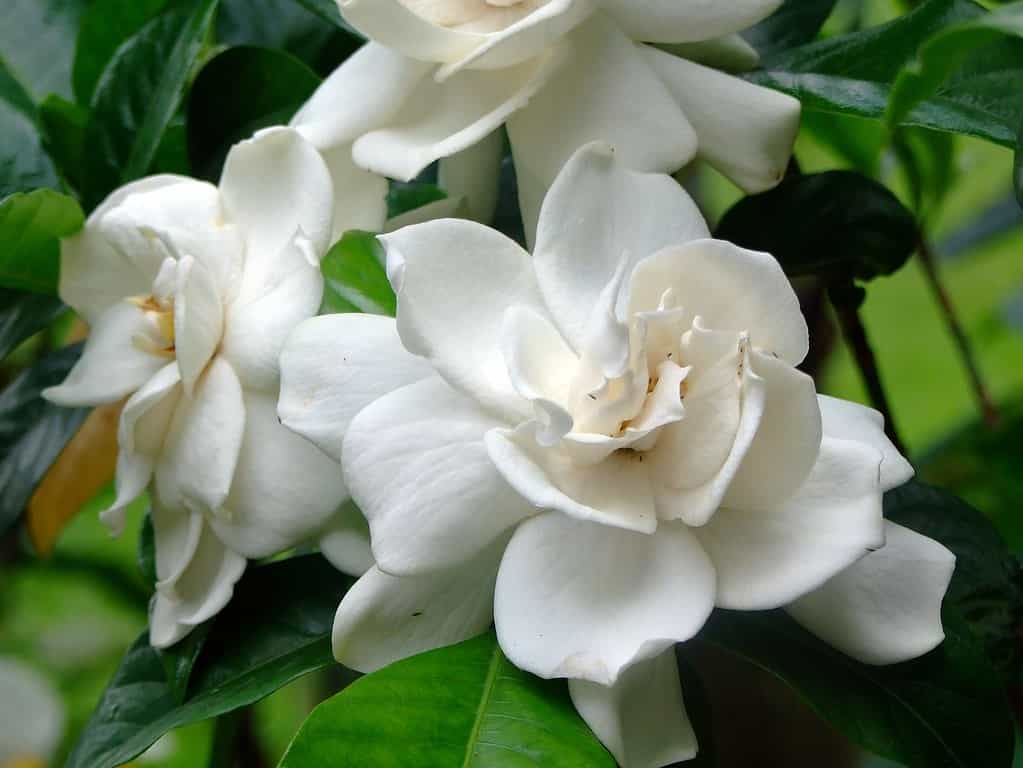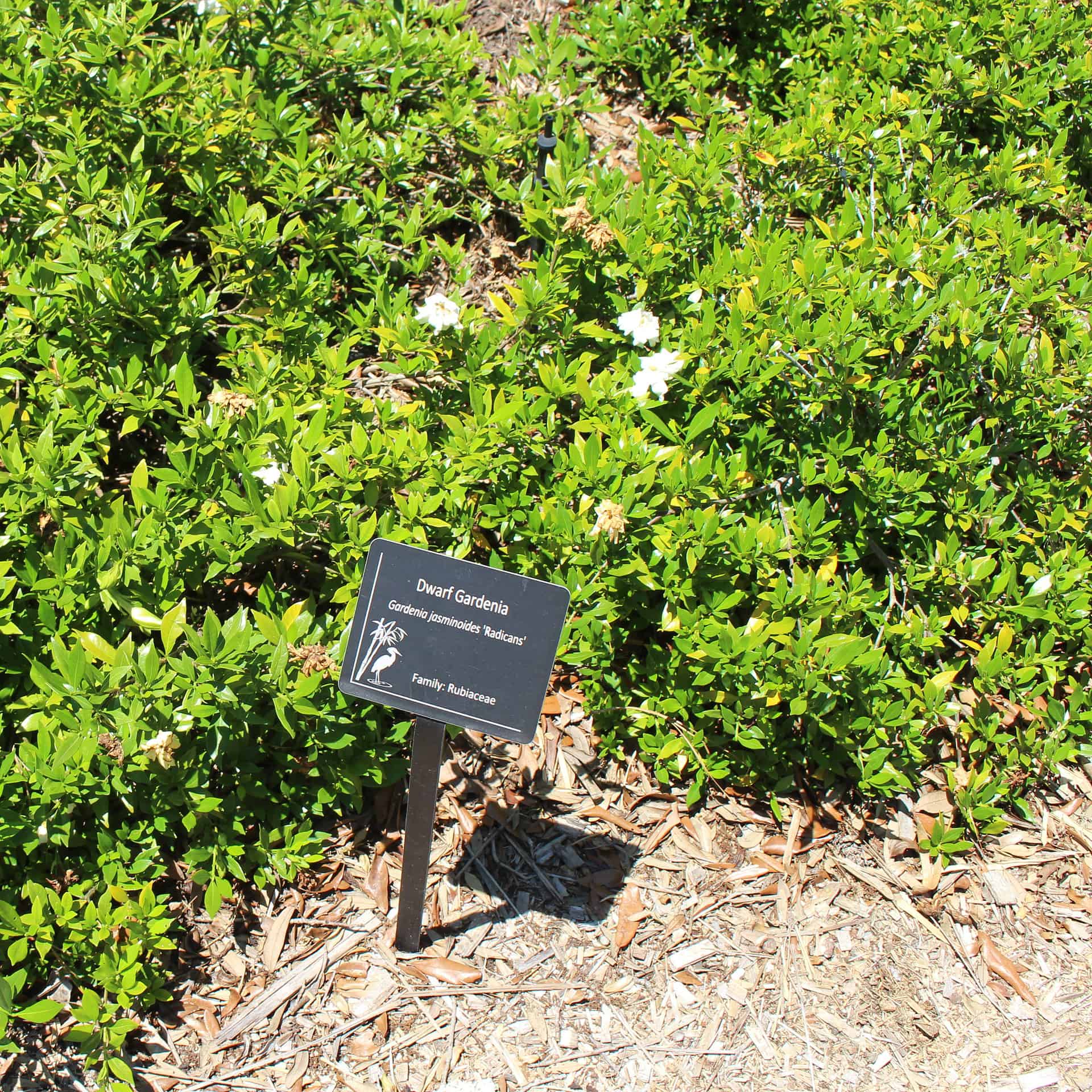No products in the cart.
Have you tried growing roses without success? You need not stress as the Gardenia makes for a great alternative. One of the most famous species is Gardenia jasminoides Frostproof, a cold hardy plant that can grow in cold temperatures.
So, if you want to brighten your garden, then the Cape Jasmine is what you need.
Botanical Name: Gardenia jasminoides Frostproof
Other Names: Cape Jasmine Frostproof, Frostproof Cape Jasmine, Gardenia Jasminoides Frost Proof
Native Area: Southern China and Japan
Plant Type: Evergreen Shrubs
Growth: 5 Feet Tall and 4 Feet Wide
Fertilizer: Azalea or Gadenia Feed
Light Requirement: Full sun to part shade
Propagation: Seed, greenwood, semi-hardwood cuttings
Soil Type: Acidic soil
Temperature: Dry, warm temperatures
Toxicity: Toxic to Pets
Watering: Roots need to remain moist
USDA Zones: 7-11
More About Gardenia Jasminoides Frost Proof
The Gardenia jasminoides ‘Frostproof’; you can enjoy growing in cold, hardy zones without any problems. The Frostproof Gardenia is a member of the Rubiaceae family, composed of 140 species in the genus.
The flowering perennial can reach a reasonable height to grow as shrubs in the landscape or a container. The green leaves provide an eye-catching texture even when in bloom. As with most Gardenias, the Frostproof Gardenia begins blooming in early summer to continue throughout the growing season.
The fragrant flowers are showy, and the plant blooms white flowers that measure three inches across. The fragrant flowers contrast nicely with the foliage and produce a sweet scent.
Cape Jasmine Frostproof Gardenia Plant Care

The Cape Jasmine is a frost-hardy plant to grow in the cold, hardiness zones away from tree roots where it need not have competition for nutrients. It is a cultivar with large white double flowers, dark green leaves, and a medium-sized evergreen shrub. The flower buds are sweetly fragrant and withstand winter cold and the harshness of the last frost.
Light & Temperature Needs For Gardenia Jasminoides Frostproof
The Frost Proof Gardenia provides continuous blooming under the right living conditions. Yet, the evergreen shrub needs adequate sunlight to bloom profusely. Hence, choose a spot in full sun to dappled shade.
Ideally, the evergreen shrub needs full morning sun with afternoon shade in warm climates. Nevertheless, you can grow your cultivars in full sunlight in cooler climates all day. Also, please provide them with a thick layer of mulch.
The main attraction of the Cape Jessamine Frostproof is the high tolerance against the late spring frosts when planted in USDA zones 7 to 10. If you grow your Cape Jasmine in a container, you can grow it in colder zones to bring indoors.
Soil & Transplanting Cape Jessamine Frostproof

The Cape Jasmine Frostproof preferably enjoys organic-rich, well-drained soil. While the plant can grow in sandy, clay, or loamy soil, the important thing is to keep the soil moist and provide good air circulation and drainage.
For clay soils, amend it with coarse sand or lava stones to help improve drainage. The same applies to containers, and ensure it has enough drainage holes. We recommend aiming for a soil pH between 5 to 6.5 with minimal salt content, as their tolerance is low against salt.
Use organic mulch like pine straw or bark to improve plant care and health. Also, please pay attention to the spacing, leaving them growing 48 inches apart. Still, common problems, even if frost-proof, the root systems are delicate.
So, take extra care of the roots when transplanting and ensure your plant has good health before attempting this. Then, in late summer, you can prune your Gardenias back 1/4 to 1/3, allowing the foliage to heal before transplanting.
Also, transplant the root ball with enough of the original soil, and once in a new pot or spot, you can backfill and tamp the area down. Water them well and provide regular watering in the following weeks after planting.
These evergreen shrubs make for excellent hedges when established, and the narrow petals on the blooms with the fragrance are out of this world.
Watering and Feeding Cape Jasmine Frostproof
Your Cape Jasmine needs regular watering to keep the soil moist but never waterlogged, as it can lead to root rot. You may find you need to water often from spring to early summer and fall, depending on the heat and rainfall.
Your Cape Jasmine Frostproof has a high iron deficiency and will need fertilizer to keep it healthy. Use an azalea fertilizer to fertilize your Cape Jasmine after the final frost and give another dose about six weeks later.
We recommend a fertilizer with a ratio of 2-1-1; if you notice the leaves turning yellow, your outdoor plants have an iron deficiency. You can then apply fertilizer again in the summer.
Grooming And Maintenance For Frost Proof Gardenia
 Gardenia jasminoides @carllewis
Gardenia jasminoides @carllewis
For the Frost Proof Gardenia, pruning is beneficial and done for shaping the shrub. For example, you can deadhead below a leaf node to encourage blooms. Also, prune your Cape Jasmine Frostproof after the blooming period before the fall to allow the plant to heal.
We recommend avoiding hard pruning as it can lead to stunted growth in the next growing season.
Propagating Caspe Jasmine
The easiest way to propagate the Cape Jasmine is through stem cuttings. The best time to do this is in early spring or take some during the pruning. The important thing is to allow your plant to accustom outdoors before winter.
Take a cutting using sterilized shears about five inches long from a stem tip with green wood. Cut below a leaf node and remove the lower leaves leaving the top set.
Prepare some pots with moist potting media.
Make a hole in the center, dip the cut end into the rooting hormone, and place it in the hole.
Backfill and place a plastic bag over the container to keep in indirect sunlight with temperatures around 75°F. Keep it moist until the roots develop in eight weeks.
When temperatures warm up and weather permits, you can transplant them to a spot in the garden. You can also plant seeds, but the process is long and can take up to two years before your Frost Proof Gardenia flowers.
The process collects the dried seed pods that follow the white flowers. Leave the pods to dry out for four weeks in direct sunlight. Next, prepare a mixture of peat moss and perlite and barely cover the seeds.
Keep the seeds moist and away from direct light until they sprout, which takes about six weeks; when the seedlings reach a few inches tall, transplant them to pots filled with a peat-based potting medium to continue growing.
Once the seedlings have three sets of true leaves, you can transplant them to the garden.
Gardenia Jasminoides Varieties
The Cape Jasmine Frostproof is not the only plant to grow in the garden, as there are other Gardenias.
Aimee
The Aimee grows double bloom with intensely fragrant flowers. Out of all the Gardenias, this cultivar is huge with dark green leaves and is fast-growing. It also blooms large white double flowers. The evergreen shrub can reach up to 12 feet tall and 6 feet wide. You can even train it to grow into a tree.
One thing is for sure the fragrance is unforgettable.
Fortuniana
 Gardenia jasminoides Fortuniana @flicker
Gardenia jasminoides Fortuniana @flicker
The Gardenia jasminoides Fortuniana is a corsage Gardenia making some of the best free-blooming varieties. The evergreen shrub has medium-sized glossy green leaves with perfumed white flowers.
Buttons

The dwarf variety grows up to 30 inches tall and yields two-inch flower buds. The white flowers have a gorgeous button center and are heat tolerant. The evergreen shrub grows well in a landscape to containers.
Crown Jewel
The Cape Jasmine Crown Jewel is a woody evergreen shrub with compact mound growth. The shrub reaches three feet tall, and the flowers measure three inches in diameter. The plant is hardy in the hardiness zones as far north as Zone 6.
Gardenia Jasminoides Frostproof Common Pests and Diseases
Overall the Gardenia jasminoides Frostproof is durable to resist common pests, diseases, drought, mildew, heat, and deer. The most common problem is iron loss resulting in yellow leaves.
Another common diseases are leaf spot that happens from overwatering. Even improper watering can lead to bud drop. Still, your Gardenia jasminoides Frostproof can suffer from powdery mildew, sooty mold, and anthracnose.
The best is to ensure your plants get enough air circulation and water at the base of the plant. Wilted leaves are a sign of underwatering but can also mean it is overwatered and best to check the soil to water accordingly. So do not provide too much water.
Your plants are susceptible to mealybugs, aphids, spider mites, whiteflies, and scale.
Frequently Asked Questions
The plant‘s name comes from Alexander Garden, a Scottish botanist known for researching medicinal properties in the 1700s in plants. The belief is that the flowers bring good luck and are placed in patients’ rooms to recover.
When grown outdoors in the right conditions, it can grow up to 50 years with proper care.
Both plants have beautiful fragrant flowers, yet the Gardenia is a shrub while the Jasmine is a vine. The Gardenia has long-shaped waxy leaves, while the Jasmine leaves are shorter. The main difference is that Jasmine flowers outdoors throughout November in certain regions except the Gardenia, if an ever-blooming species.
You can find Gardenias sold at your local garden center or nursery. But instead of leaving the comfort of your home, you can purchase the Cape Jasmine here at Plantly. The plant makes for exceptional cut flowers in a vase.
Whether you want to buy, sell, or simply reach out to other plant enthusiasts, Plantly is the right place to be!


